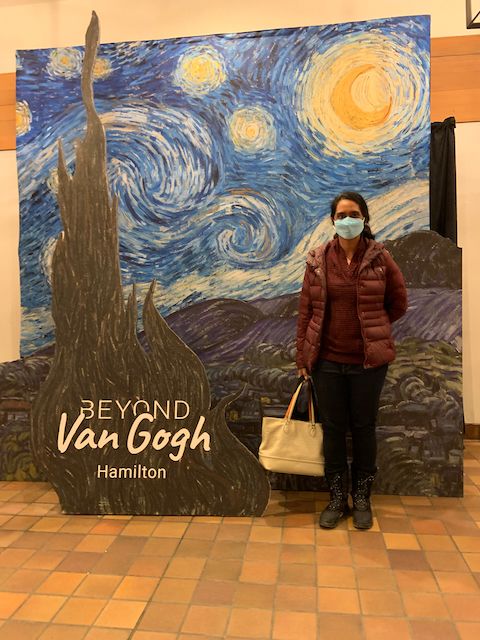making a case for dark art: questioning and shedding my old notions and beliefs
In some very dark times, it was only in fiction that I found the valour to fight and slay the demons, villains, tricksters and monsters I was convinced I wouldn't be able to face in real life.
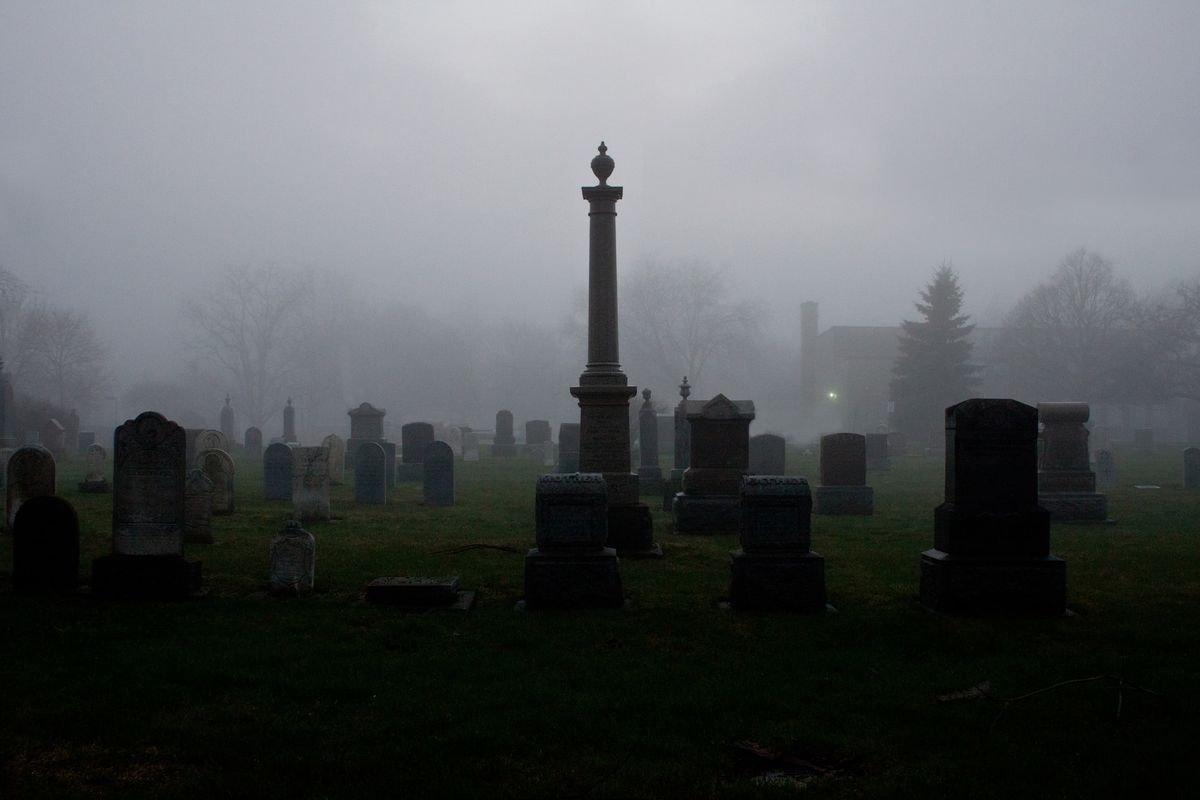
This morning, I was looking for gentle piano tunes on Spotify and it yielded me a playlist, the first song of which was titled Van Gogh by contemporary pianist, Virginio Aiello.

As with everything I fall in love with, I've been listening to this on loop pretty much since morning. But more than that, this melody is has caused me to question and shed a long outdated view I've held on art until now.
Please allow me to explain in my usual rambling, meandering, storytelling way.
A late mystic's opinion on subjective and objective art
Almost two years ago, in all my youthful naïveté, I wrote a piece quoting the great mystic, Osho, and his take on subjective and objective art (although he makes a reference to the works of Picasso, not those of Van Gogh). I paste below the particular lines I refer to from that earlier post.
Art can be divided into two parts. Ninety-nine percent of art is subjective art. Only one percent is objective art. The ninety-nine percent subjective art has no relationship with meditation. Only one percent objective art is based on meditation.
The subjective art means you are pouring down your subjectivity on the canvas, your dreams, your imaginations, your fantasies. It is a projection of your psychology in the same way it will be in poetry, in music, in all dimensions of creativity. You are not concerned with the person who is going to see your painting. You are not concerned what will happen to him when he sees your painting; that is not your concern at all.
Your art is simply a kind of vomiting. It will help you, just the way vomiting helps. It takes the nausea off, makes you cleaner, makes you feel healthier. But you have not considered what is going to happen to the person who is going to see your vomit. He will become nauseous. He may start feeling sick.
Look at the paintings of Picasso. He is a great painter, but just a subjective artist. Looking at his paintings, you will start feeling sick, dizzy, something going berserk in your mind. You cannot go on looking at Picasso's paintings long enough. You would like to get away, because the painting has not come from a silent being. It has come from a chaos. It is a by-product of a nightmare. But ninety-nine percent of art belongs to that category.
Objective art is just the opposite. The man has nothing to throw, he is utterly empty, absolutely clean. Out of this silence, out of this emptiness, arises love, compassion, and out of this silence a possibility for creativity. This silence, this love, this compassion, these are the qualities of meditation. ~ Osho
For a long time, I took Osho's words to heart and decided that I would create only when in a state of equanimity.
Of course, that turned out to be a huge struggle for I'm only human, and placing that pre-condition on my creative process led me down all kinds of rabbit-holes.
As intimately familiar as I am with the workings of my own inner mind, it troubled me to think that my creative output was a reflection of that terrifying inner turmoil. The thought that I was putting all this out there in the world gave me so much grief, my goodness!
An exposition of beauty and the madness that lived alongside
So this morning as I was listening to Van Gogh, the piano composition by Virginio Aiello, it reminded me of my visit to a Van Gogh immersion exhibit in Hamilton sometime last year.
KrA and I were to attend it together, in what was to be one of our first outings after his 2-month bedrest following his fracture and surgery. But little D fell ill and couldn't go to school that day, so KrA suggested I go there by myself.
And what a treat it was! Like an artist's date. The little road trip to Hamilton, and then the exhibit itself.
At the entrance were large picture frames featuring snapshots from Vincent van Gogh's life and many of the words he spoke or wrote in his letters to loved ones, especially to his younger brother Theo.
"... find things beautiful as much as you can, most people find too little beautiful."
"trouve beau tout ce que tu peux, la plupart ne trouvent pas suffisamment beau."
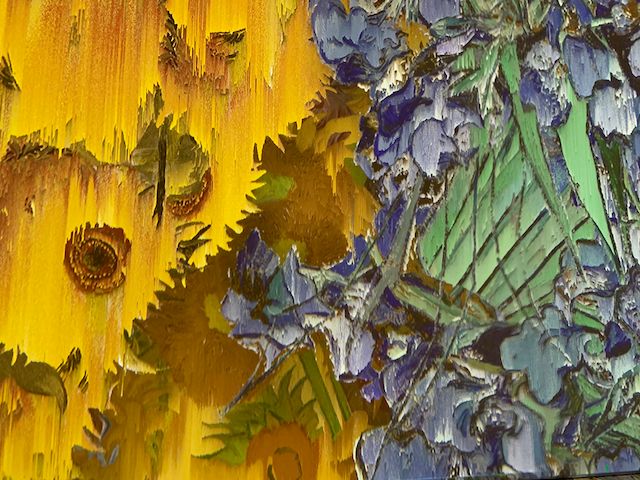
"I also believe that it may happen that one succeeds, and one mustn't begin by despairing; even if one loses here and there, and even if one sometimes feels a sort of decline, the point is nevertheless to revive and have courage, even though things don't turn out as one first thought."
~ To Theo van Gogh, The Hague, 22 October 1882
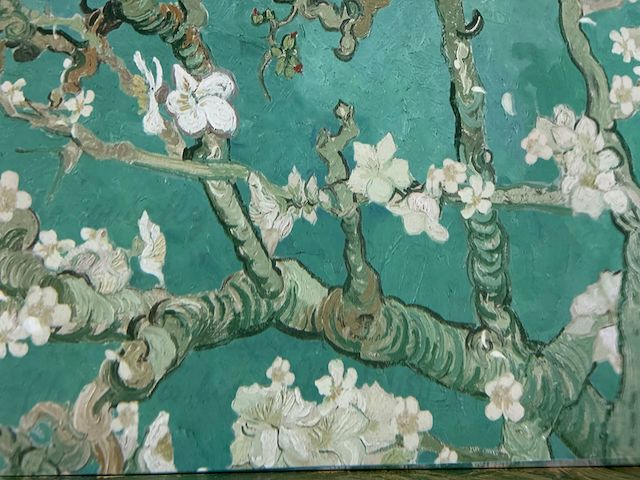
"In life and in painting too, I can easily do without the dear Lord, but I can't, suffering as I do, do without something greater than myself, which is my life, the power to create."
To Theo van Gogh, Arles, 3 September 1888
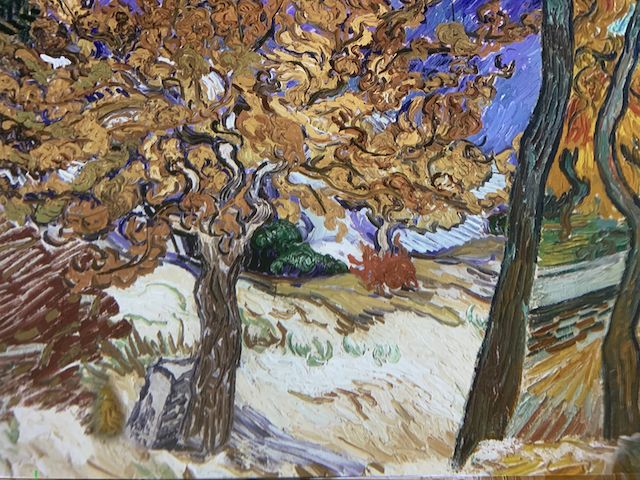
"... I always think that what we need is sunshine and fine weather and blue air as the most dependable remedy."
~ To Theo van Gogh, Arles, 29 September 1888
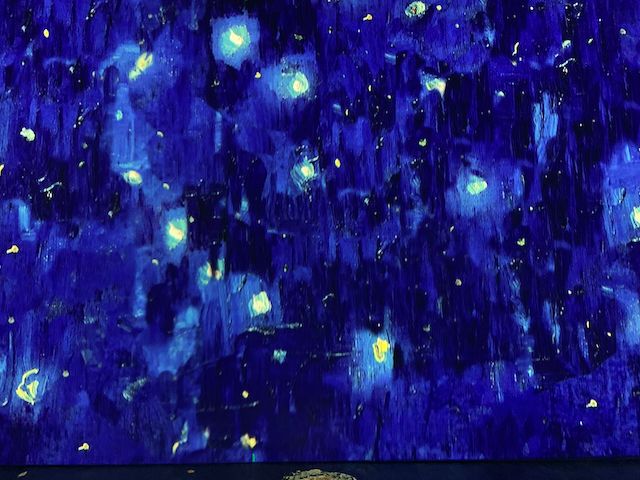
The exhibit itself was a thing of beauty. Imagine colours and paintings moving on the walls and ceiling all around you, as if Van Gogh's very paintings had come to life and could take you into them if you only dared to step forward.
But images do little justice to the immersive experience itself. So here's a little video to give you a glimpse of how magical the experience was!
I spent a little more than an hour, filled with awe and wonder. On the way out, I bought a poster of Van Gogh's Starry Night, planning to buy a frame for it later and put it up on the wall against my writing desk.
It was only later that I found out that Van Gogh had created this masterpiece when he was a resident at the Saint-Rémy-de-Provence asylum, having voluntarily admitted himself there after the episode that entailed his self-mutilation of his ear.
When I learnt that, it immediately reminded me of Osho's sermon on subjective and objective art. I could no longer look at the painting without thinking of the mental breakdown that had led Van Gogh to that place depicted in his painting.
I was terrified that simply by looking at the painting, I'd absorb much of that mental instability through some eerily inexplicable phenomenon of symbiosis through time and space.
And so it has been lying in the basement, still in its frame, as we couldn't figure out where else to put it. D said he'd love for it to be put up in his room, but if I was terrified of the effect the painting could have on me, my fear for D was a gazillion-fold.
At one point, I was ready to rip the poster and throw it away and use the frame for something else. But I let it be. Cast away and out of sight.
And that was the end of it until I heard Van Gogh this morning.
The fact that the piece was titled thus intrigued me. And after listening to it, my heart was simply moved by the sheer of beauty of it ... and all the beliefs I had held on dark art were washed away like mud carried off by a raging river.
Welcoming both the light and shadow aspects of me
Osho, for the first time in my life, I will have to disagree with you. Or rather, I will have to revise my interpretation of your words.
Just because most of us humans can only produce subjective art does not mean we shouldn't create it in the first place.
We must create, whether from our light or from our shadow side, because all parts of us when expressed thus, through the medium of art, enable others to accept their own light and shadow sides.
I have been writing for a while now, and many of my works tend to be steeped in melancholy. For a long, long time, I've felt ashamed of that.
OK, so here's a list of all the things I've harboured deep shame about.
- loving melodies in the minor scale (such as Van Gogh)
- watching deep, moving tragedies and crying my heart out
- reading books that rip out my soul and shred it into countless pieces, over and over again
I don't stay in this zone all the time. I do love peppy beats and the occasional comedy but those are rarely ever my first choices.
I love all that is poignant and deep. The shallow and superficial always leave me thirsting for something more.
But darkness is always to be found in depth. We simply cannot walk into a place of depth without a beacon of light to show us the way.
And so, depth and darkness need not signal an absence of hope.
When you swim to the bottom of the lake and then come back up and break surface, that first gulp of fresh air is life-saving.
In the same way, we need not fear treading through darkness in our creativity. For some of us, that is the only way to light and hope.
I no longer intend to deny myself the joy of meandering through the dark places that I inhabit so often.
Author Joanna Penn talks about the shadow side and how it influences her own writing, and she has plans to write and publish her shadow book, as she calls it, about writing from your dark side. It is something I'm very excited about and looking forward to later this year.
I was just looking up on her website for references to authors who write dark fiction and I've just come across David Wright – I'm going to be looking into his book on writing dark fiction – but here's a line from his book that Joanna mentions in a 2019 podcast in which he was the guest, and I love it.
"It might very well be necessary for my well-being to write dark books."
~ David Wright
And later on in the interview, he goes on to say,
... writing is about dealing with dark things, but also trying to find hope. Trying to find the light in the darkness to hold onto. For me, I just find writing about it helps me to see the good things in the world as well.
My, oh my!

A few years ago, when D was about 3 years old or so, I wrote a bunch of short stories that were all very dark, all entailing a parent and a child and things going haywire.
It all came about because having a child completely changes your perspective and I faced so much fear and anxiety back then, and the only outlets I could find for it all was in writing.
I wrote those stories but I've kept them hidden. Occasionally I toyed with the idea of publishing them, but then Osho's opinions on subjective art would come into my head and I'd squash the idea.
I didn't want to be putting dark stuff out there, even though these stories in particular did not have bleak endings. Courage was displayed. Trouble was overcome. Acceptance was gained. Resolution was achieved.
For you see, in those very dark times, it was only in fiction that I found the valour to fight and slay the demons and villains and tricksters and monsters that I was convinced I wouldn't be able to face in real life.
Yet, because of all the meandering into the dark to come out into the light, I kept self-censoring.
But then I'd continue to go and read thrillers with serial killers and child abductors and terrify myself and wonder how those authors could write such things and I'd envy their courage to do so yet also shame myself for even wanting to read such dark stuff.
So now with this newfound wisdom, I give myself permission to create what comes from my heart and soul, knowing that my writings will reach out to you and touch your heart and soul too.
There is a reason that darkness exists. It is so that we may bring forth our own light to navigate it.
And by navigating our darkness, we may aspire to create the kind of art that instills hope and courage.
Objective art, in the words of Osho
In parting, I will leave you with the part of Osho's message that speaks more clearly to me now than it did the previous time. Having embraced my dark side, I'm better able to appreciate both the light and the darkness that live within me.
Osho's opinion on objective art now appears to me as the kind of perfection I can certainly aspire to, knowing well that the purpose is not to reach it but to keep heading in that direction, catching myself when I've gone astray and correcting course, over and over again.
And that is the gift I leave for you now.
Meditation brings you to your very centre, and your centre is not only your centre, it is the centre of the whole existence. Only on the periphery we are different. As we start moving towards the centre, we are one. We are part of eternity, a tremendously luminous experience of ecstasy, which is beyond words, something that you can be but very difficult to express it. But a great desire arises in you to share it, because all other people around you are groping for exactly such experiences. And you have it. You know the path.
And these people are searching everywhere except within themselves – where it is. You would like to shout in their ears. You would like to shake them and tell them that "Open your eyes! Where are you going? Wherever you go, you go away from yourself. Come back home, and come as deep into yourself as possible."
This desire to share becomes creativity. Somebody can dance. There have been mystics – for example, Jalaluddin Rumi – whose teaching was not in words, whose teaching was in dance. He will dance. His disciples will be sitting by his side, and he will tell them that "Anybody who feels like joining me can join. It is a question of feeling. If you don't feel like, it is up to you. You can simply sit and see."
But when you see a man like Jalaluddin Rumi dancing, something dormant in you becomes active. In spite of yourself, you can find you have joined the dance. You are already dancing before you become aware you have joined it.
Even this experience is of tremendous value, that you have been pulled like a magnetic force. It has not been your mind decision, you have not weighed for pro or for against, to join or not to join, no. Just the beauty of Rumi's dance, his spreading energy, has taken possession of you. You are being touched. This dance is objective art. ~ Osho
